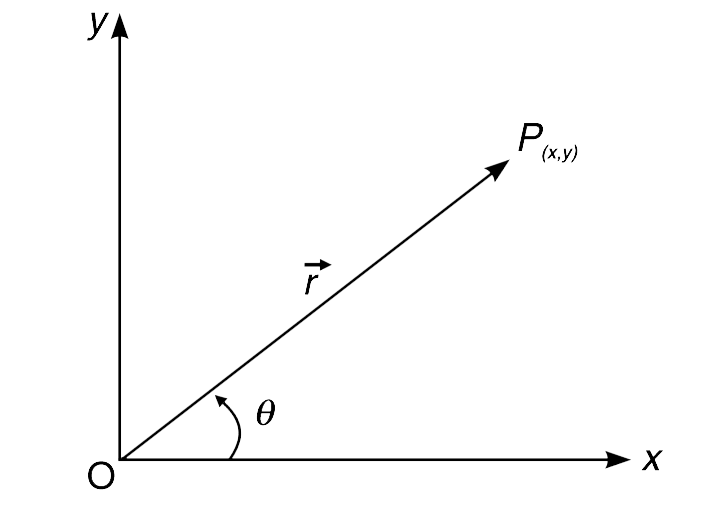A particle has co-ordinates (x, y). Its position vector makes on angle θ with positive x direction. In an infinitesimally small interval of time the particle moves such that length of its position vector does not change but angle θ increases by dθ. Express the change in position vector of the particle in terms of x, y, dθ and unit vectors ˆi and ˆj.

The correct Answer is:→Δr=(−yˆi+xˆj)dθ
Step by step video, text & image solution for A particle has co-ordinates (x, y). Its position vector makes on angle theta with positive x direction. In an infinitesimally small interval of time the particle moves such that length of its position vector does not change but angle theta increases by d theta. Express the change in position vector of the particle in terms of x, y, d theta and unit vectors hati and hatj. by Physics experts to help you in doubts & scoring excellent marks in Class 11 exams.
Topper's Solved these Questions
- BOOK - ARIHANTCHAPTER - KINEMATICSEXERCISE - Level 333videos
KINEMATICS
- BOOK - ARIHANTCHAPTER - KINEMATICSEXERCISE - Level 333videos
KINEMATICS
- BOOK - ARIHANTCHAPTER - HEAT TRANSFEREXERCISE - Heat Transfer45videos
HEAT TRANSFER
- BOOK - ARIHANTCHAPTER - KINETIC THEORY OF GASESEXERCISE - Level 34videos
KINETIC THEORY OF GASES
Similar Questions
Knowledge Check
- Question 1 - Select One
A vector of length l is turned through the angle θ about its tail. What is the change in the position vector of its head ?
Alcos(θ/2)B2lsin(θ/2)C2lcos(θ/2)Dlsin(θ/2) - Question 2 - Select One
A vector →A is rotated through angle θ about its tail. Change of position vector of its tip of is:
AAsinθB2Acos.θ2C2Asin.θ2DAcosθ - Question 3 - Select One
A particle moves in a plane such that its coordinates changes with time as x=at and y=bt, where a and b are constants. Find the position vector of the particle and its direction at any time t.
A(a)ˆi+(bt)ˆjB(at)ˆi+(b)ˆjC(at)ˆi+(bt)ˆjD(a)ˆi+(b)ˆj
The position vector of the centre of mass of a system of particles is the _________ of the position vectors of the particles, each particle making a contribution proportional to its _________
View SolutionIf position vector of points A,B and C are respectively ˆi,ˆj,andˆk and AB=CX, then position vector of point X is
View SolutionThe position vector of a particle is r=asinωtˆi+acosωtˆj
The velocity of the particle isView SolutionThe vector sum of two force P and Q is minimum when the angle θ between their positive directions , is
View SolutionA particle is moving with constant speed v along the line y = a in positive x -direction. Find magnitude of its angular velocity about orgine when its position makes an angle θ with x-axis.
View Solution

